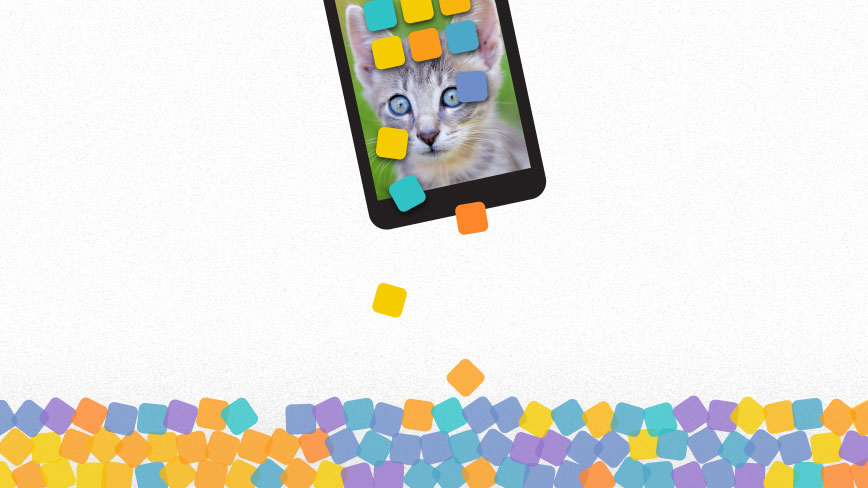App downloads are on the decline, but marketers can entice consumers to download branded apps by following four best practices.
“There’s an app for that” is a common marketing line, but now consumers are wondering if they needed an application for “that” in the first place. Recent data suggests that app downloads have seen a major drop-off, especially in the U.S. Downloads of the most popular apps declined an average of 20 percent in America in May 2016 compared to the same month the year before, while growth is very slow in the rest of the world.
In light of these statistics, marketers should be concerned that introducing branded apps and keeping an engaged user base will become more difficult as new “it” apps take hold. However, a few success stories provide a light at the end of the tunnel and set positive examples for brands trying to improve or sustain their digital presence.
Apps Lose Their App-peal
When Apple introduced the iPhone, one of its most successful marketing hooks was the ease and accessibility of programs. Each app provided simple functionality in an intuitive user interface, but as smartphones matured, both iOS and Android devices offered increasing complexity in terms of what apps could do. Apps became integrated and frictionless, letting users perform tasks like copying text directly into an organizing aid with just a few swipes. New players like social media platforms also entered the scene, driving hype and curiosity while gaining millions of new users in a short time.
Now, it seems that gravy train has started to lose momentum. Mobile owners have lost their drive to explore new apps, with many not even downloading a single new app within a month. Other data shows that less than one in four people open an app more than once.
Some theorize that the reasons for the sharp decline lie in the oversaturation of the market with apps that don’t fit consumers’ needs and the fact that they already have their preferred go-to apps.
Proper Marketing Equals Successful App Downloads
The good news in this downturn is that plenty of counterexamples exist. Therefore, marketers can improve the success of apps by taking note of the following best practices and positive use cases to market them correctly:
- Stay relevant — Brands with a large reach like Nissan find success by making their apps relevant to current events. Its “Die Hard Fan” app has been updated to correlate with the 2016 Rio Olympics. The app allows fans to choose face paint based on their country’s flag colors.
- Entice users to consistently use the app — Consumers may be excited by a new app and use it often, but what happens when the novelty wears off? Under Armour’s MapMyFitness platform is so popular because it offers exercise apps that encourage users to log their fitness workouts and meals daily.
- Consider integrating elsewhere — Social media and business apps remain popular even as others decline, causing brands to go where the crowds are. PepsiCo is collaborating with Twitter to allow users to add Pepsi-branded stickers to photos they want to tweet via an app.
- Incentivize, measure and leverage — App usage is all about the user experience and providing value to users. To enhance app usage, brands should offer consumer incentives such as discounts and rewards. For example, the Hilton HHonors app offers consumers hotel discounts, and as a result, it has become so popular that it is downloaded every seven seconds from the Apple App Store. Brands should also use qualitative research and quantitative data analysis as a way to measure their app ideas, as well as leverage data about users and their devices to measure the impact of the media on downloads.
By following major successes, offering value to consumers and carefully measuring activity cross-environment, marketers can potentially buck the trend and gain app users even as other apps fall by the wayside.

